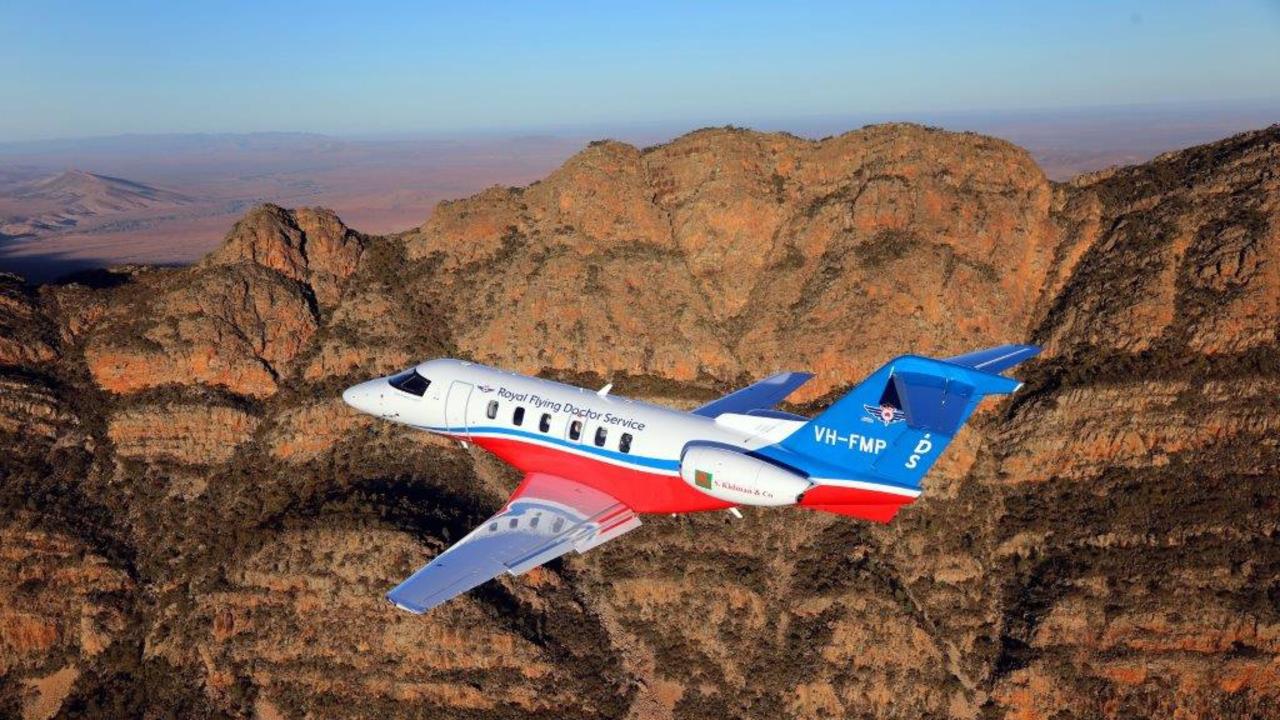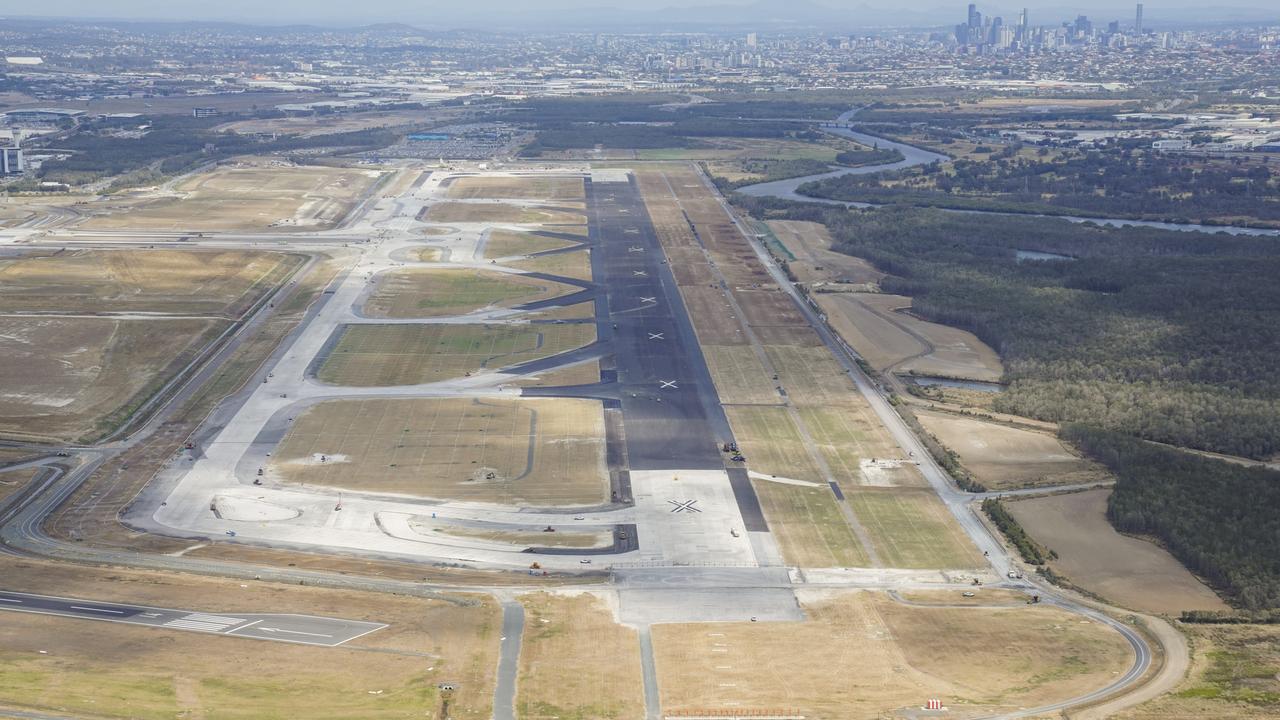Future Tourism: ‘Catalytic’ Queens Wharf project will transform Brisbane’s night-life
It will be a ‘unique urban resort’ in the heart of Brisbane’s CBD, with parks, more than 50 restaurants and retail outlets not seen in Australia before. But that’s not all the $3.6 billion Queen’s Wharf project will offer.
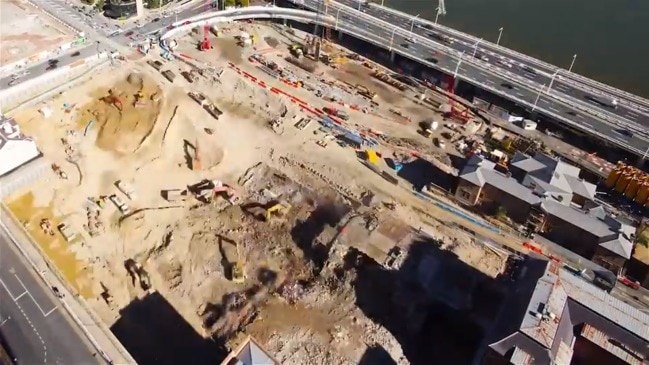
Future QLD
Don't miss out on the headlines from Future QLD. Followed categories will be added to My News.
THE developers of the Queen’s Wharf precinct say it will have the “Singapore effect” – making Brisbane a vibrant city buzzing with night-life and igniting tourism initiatives across the wider region for years to come.
The $3.6 billion integrated casino-resort under construction across more than 12 hectares of CBD land is the centrepiece of the Queensland capital’s push to position itself as a global tourism magnet, as well as a launch pad for the southeast corner.
Star Entertainment Group chief executive Matt Bekier said Queen’s Wharf, which is due to open in 2022, would be a “unique urban resort” in the city heart, opening access to the river and bay beyond and highlighting some of Brisbane’s most important heritage buildings.
Transport problems risk putting the brakes on Queensland tourism
Queen’s Wharf Brisbane: Time capsule a treasure trove of state history
Features including the distinctive arc-shaped entertainment building, parks, more than 50 restaurants, cafes, bars and microbreweries, a range of retail outlets including many new to Australia, and attractions such as an outdoor moonlight cinema and a zip line across the Brisbane River to South Bank, meant there would always be something happening, day or night.

And the rooftop Sky Deck, with 360-degree views as well as a glass bottom section looking 100 metres down to the ground, would provide that iconic “selfie” location.
Queen’s Wharf is expected to attract an additional 1.4 million visitors to Brisbane each year. But Mr Bekier said it would also have a catalytic effect on tourism.
“Singapore is a very interesting case study because when Marina Bay Sands (an integrated casino-resort) was built, they felt an initial push of tourists but now what’s happening there is that so much more additional tourism infrastructure going in on the back of it,” he said.
That included Gardens by the Bay– a 101-hecatare oasis and arts, culture and entertainment zone which is now one of the world’s 20 most-searched places on Facebook.
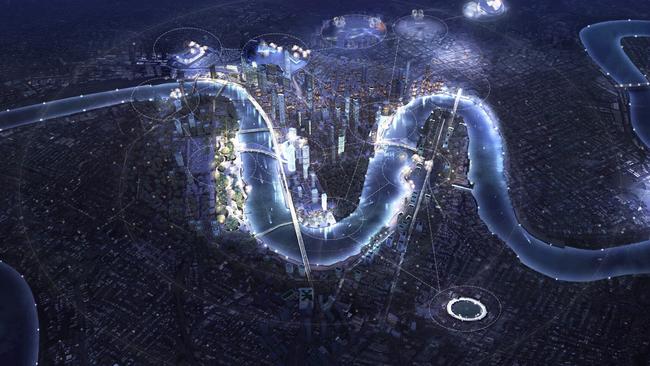
Singapore has also become world-renowned for its cutting edge urban architecture.
MONA – the Museum Of New and Old Art – had a similar impact on tourism in Hobart and Tasmania, Mr Bekier said. “I hope that Brisbane will develop in exactly the same way where we provide the initial impetus and energy and focal point, but then there’s additional development that comes organically because there are more tourists who are looking to do more things,” he said.
“If there’s enough to do in the city, we will go from a two-day international visit to a four or five-day international visit because there are so many exciting things to do.”
James Tuma, national director of city-shaping specialists Urbis, said Queen’s Wharf was a pivotal part of a series of existing and emerging entertainment and entertainment zones. They are linked by their location on, or in proximity to, the Brisbane River.
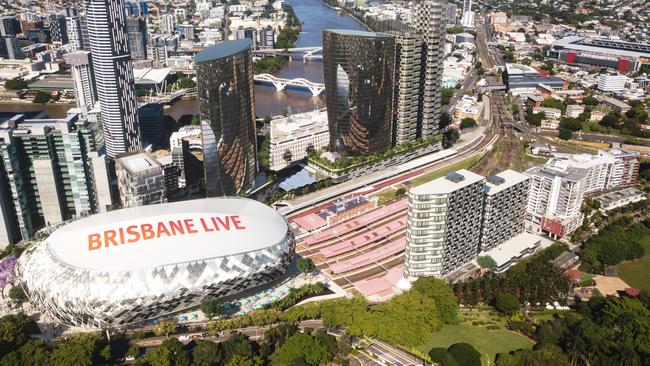
Mr Tuma said the river would increasingly take on iconic status over coming years. “I think we’re going to see the image of the city develop around the river as the new global image of Brisbane, which is fantastic,” he said.
The city is coming to life along the banks of the river.
Howard Smith Wharves has rapidly established itself as the place to be seen. The nearby Eagle St Pier/City Reach stretch of river’s edge is the subject of a master planning process, with Dexus investing $1.4 billion on its waterfront precinct that will create 1.5 hectares of new public space and mixed-use development.
The Riverstage live music venue in the Botanic Gardens could be in line for a facelift after 30 years, and new walkways and bikeways including a Mangrove Walk with indigenous trail will link the Goodwill Bridge at QUT to Queen’s Wharf. A new Waterline Park will transform the concrete jungle under the Riverside Expressway. And the recently-opened W Hotel is the centrepiece of a new Brisbane Quarter retail and dining precinct on North Quay.
On the other side of the river, the cultural precinct – including GOMA, the Queensland Art Gallery and Queensland Performing Arts Centre (QPAC), Queensland Museum and State Library – is already regarded as the best in the country and will grow with the addition of another $150m 1500-seat theatre due to open by 2022.
A master plan is being drawn up for South Bank Parklands – Brisbane’s leading visitor drawcard since its development off the back of Expo 88 – which could see it expand by two-thirds with a pedestrian boulevard linking it to Musgrave Park.
Following the river’s curve adjacent to South Bank is Kurilpa Point, 25 hectares of prime land earmarked for a vibrant new waterfront neighbourhood of 11,000 residents packed with dining options, a waterfront park and amphitheatre and cultural facilities. It feeds into the revitalised South Brisbane suburb with its trendy laneways of restaurants, street art, live entertainment and festivals.

And Brisbane City Council is rolling out its river access network of jetties, pontoons and boat ramps to boost the number of tourist boats, water taxis, leisure boats, jetskis and kayaks, canoes and paddleboards on the river.
New Lord Mayor Adrian Schrinner has also unveiled a $550 million plan for five new “green” bridges across the river over the next decade.
Mr Tuma said the focus on the river would inevitably lead to greater activity along the waterfront of the University of Queensland campus and revitalise Milton and Toowong, along with The Powerhouse area at New Farm and the music hub in Fortitude Valley.
Enormous development is planned for the former Army site in Bulimba and the previously industrial expanse along Hamilton Northshore, which is the possible site of a major Brisbane Seafood Market advocated by Tourism Australia chief executive John O’Sullivan to rival the Sydney Fish markets, which attracts three million people a year.
Former Brisbane marketing chief John Aitken, who now heads the Inspiring Cities consultancy, agrees the river is critical to future night-life.
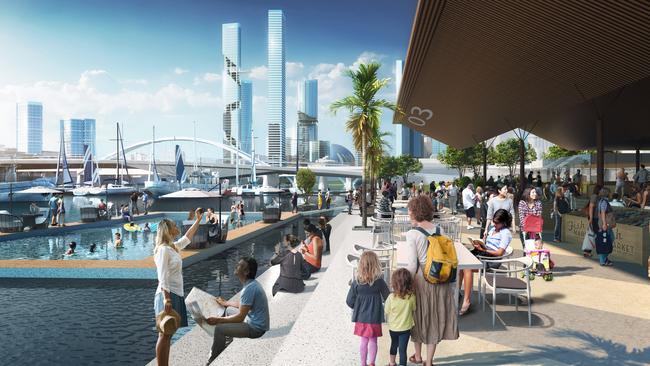
He suggests illuminations similar to those some Asian cities – perhaps lights on CityCats as well as riverfront night markets – could add “vibrancy and energy”. Mr Aitken, who launched Riverfestival and Riverfire which now attracts half a million people, said those events were examples of what could be done.
A little way back from the river – and set to be connected by the new $5.4 billion Cross River Rail and $1 billion metro public transport systems – is a string of top-class current and planned sports and entertainment venues.
On the southside, The Gabba will undergo a $100 million revamp at the heart of a new precinct, while on the northside, the Cross River Rail Delivery Authority is still working on proposals to include construction of the $2 billion Brisbane Live indoor arena above the train lines as part of the new Roma St Station zone.
It will be within walking distance of the country’s best rectangular football venue, Suncorp Stadium, and Victoria Park Golf Course – set be transformed into a 45-hectare green sanctuary of gardens, woodlands and water features to become Brisbane’s equivalent of Central Park in New York or London’s Hyde Park.
And that is in walking distance of the RNA Showgrounds, which has undergone a $4 billion redevelopment, and the new Herston Quarter precinct.
Just minutes away, both the Mayne Rd Railyards at Bowen Hills and Albion Park Raceway have been identified as likely sites for major venues should southeast Queensland secure the 2032 Olympic Games, including the main stadium to host the opening and closing ceremonies.
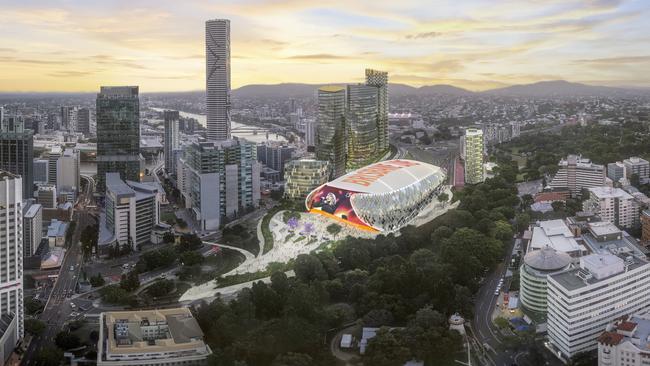
ALL QUIET ON LIVE PROPOSAL
BRISBANE Live has become the $2 billion elephant in the room. Silence surrounds the Palaszczuk Government’s intentions for the proposal to build an indoor sports and entertainment arena and precinct above Roma Street Station.
The brainchild of Harvey Lister, chairman of international venues operator AEG Ogden, the proposal was taken under the wing of the Cross River Rail Delivery Authority last year. The Government allocated $5 million to develop a Brisbane Live business case, which was handed to Treasurer Jackie Trad before Christmas.
But more than six months later, the Government will not say when it will be released.
A spokeswoman for Ms Trad last night said it remained under consideration.
The planned 17,000-seat arena has also been identified as a potential Olympics venue.

